Events
| | This section needs expansion. You can help by adding to it. (October 2015) |
| Years in Poland: | 1770 1771 1772 1773 1774 1775 1776 |
| Centuries: | 17th century · 18th century · 19th century |
| Decades: | 1740s 1750s 1760s 1770s 1780s 1790s 1800s |
| Years: | 1770 1771 1772 1773 1774 1775 1776 |
Events from the year 1773 in Poland
| | This section needs expansion. You can help by adding to it. (October 2015) |
| | This section needs expansion. You can help by adding to it. (October 2015) |
| | This section needs expansion. You can help by adding to it. (October 2015) |
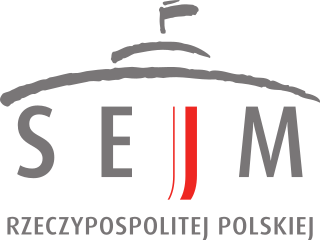
The Sejm, officially known as the Sejm of the Republic of Poland, is the lower house of the bicameral parliament of Poland.
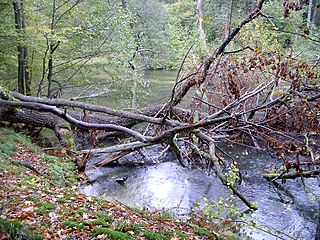
The Łyna, is a river that begins in northern Poland's Warmian-Masurian Voivodeship and ends in Russia's Kaliningrad Oblast.

Noteć is a river in central Poland with a length of 391 km (243 mi) and a basin area of 17,302 km2 (6,680 sq mi). It is the largest tributary of the Warta river and lies completely within Poland.
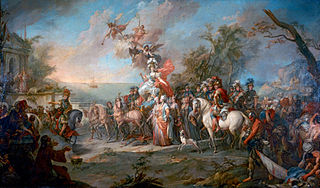
The Russo-Turkish War of 1768–1774 was a major armed conflict that saw Russian arms largely victorious against the Ottoman Empire. Russia's victory brought the Yedisan between the rivers Bug and Dnieper, and Crimea into the Russian sphere of influence. Through a series of victories accrued by the Russian Empire led to substantial territorial conquests, including direct conquest over much of the Pontic–Caspian steppe, less Ottoman territory was directly annexed than might otherwise be expected due to a complex struggle within the European diplomatic system to maintain a balance of power that was acceptable to other European states and avoided direct Russian hegemony over Eastern Europe.

Tadeusz Reytan was a nobleman from the Polish–Lithuanian Commonwealth. He was a member of the Sejm of the Polish–Lithuanian Commonwealth from the Nowogródek Voivodeship. Reytan is remembered for a dramatic gesture he made in September 1773, as a deputy of the Partition Sejm. There, Reytan tried to prevent the legalization of the first partition of Poland, a scene that has been immortalized in the painting Rejtan by Jan Matejko. He has been the subject of many other art works, and is a symbol of patriotism in Lithuania, Belarus and Poland. Despite his efforts, the partition of Polish–Lithuanian Commonwealth was legalized soon afterwards.

The Province of West Prussia was a province of Prussia from 1773 to 1829 and 1878 to 1920. West Prussia was established as a province of the Kingdom of Prussia in 1773, formed from Royal Prussia of the Polish–Lithuanian Commonwealth annexed in the First Partition of Poland. West Prussia was dissolved in 1829 and merged with East Prussia to form the Province of Prussia, but was re-established in 1878 when the merger was reversed and became part of the German Empire. From 1918, West Prussia was a province of the Free State of Prussia within Weimar Germany, losing most of its territory to the Second Polish Republic and the Free City of Danzig in the Treaty of Versailles. West Prussia was dissolved in 1920, and its remaining western territory was merged with Posen to form Posen-West Prussia, and its eastern territory merged with East Prussia as the Region of West Prussia district.

Wyrzysk is a town in Poland with 5,263 (2004) inhabitants, situated in Piła County, Greater Poland Voivodeship.
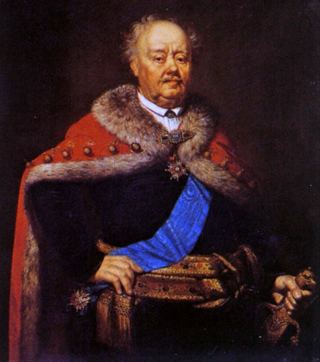
Franciszek Ksawery Branicki (1730–1819) was a Polish nobleman, magnate, French count, diplomat, politician, military commander, and one of the leaders of the Targowica Confederation. Many consider him to have been a traitor who participated with the Russians in the dismemberment of his nation.

The Commission of National Education was the central educational authority in the Polish–Lithuanian Commonwealth, created by the Sejm and King Stanisław II August on October 14, 1773. Because of its vast authority and autonomy, it is considered the first education ministry in European history and an important achievement of the Polish Enlightenment.

Prince Michał Hieronim Radziwiłł was a Polish nobleman, politician, diplomat and member of the Polish-Lithuanian Radziwill family. He was a Knight of the Order of the White Eagle and a holder of the Order of the Black Eagle. His paternal great-grandfather was Dominik Mikołaj Radziwiłł.

Stanisław Konarski, Sch.P. was a Polish pedagogue, educational reformer, political writer, poet, dramatist, Piarist priest and precursor of the Enlightenment in the Polish–Lithuanian Commonwealth.
The 18th century for the Jews of Poland was a tumultuous period as political unrest in the Polish–Lithuanian Commonwealth led to changes in the treatment and behavior of Jews living within its territory. The ascent of the Wettin dynasty to the Polish throne, as well as the government's difficulties in procuring taxes led to a waning of previous policies of religious tolerance in Poland, and the partitions of Poland during the second half of the century led to widespread violence as the government's power faltered and various regional powers and separatist movements fought for control of the territory.
The ideas of the Age of Enlightenment in Poland were developed later than in Western Europe, as the Polish bourgeoisie was weaker, and szlachta (nobility) culture (Sarmatism) together with the Polish–Lithuanian Commonwealth political system were in deep crisis. The period of Polish Enlightenment began in the 1730s–40s, peaked in the reign of Poland's king, Stanisław August Poniatowski, went into decline with the Third Partition of Poland (1795) – a national tragedy inspiring a short period of sentimental writing – and ended in 1822, replaced by Romanticism.

Vertiginidae, common name the whorl snails, is a family of minute, air-breathing land snails, terrestrial pulmonate gastropod molluscs or micromollusks in the superfamily Pupilloidea.
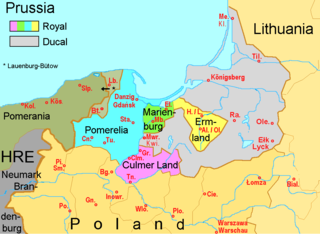
Lauenburg and Bütow Land formed a historical region in the western part of Pomerelia or in the eastern part of Farther Pomerania. It was composed of two districts centered on the towns of Lauenburg (Lębork) and Bütow (Bytów). The land is today part of the Polish Pomeranian Voivodeship.

The Prussian Partition, or Prussian Poland, is the former territories of the Polish–Lithuanian Commonwealth acquired during the Partitions of Poland, in the late 18th century by the Kingdom of Prussia. The Prussian acquisition amounted to 141,400 km2 of land constituting formerly western territory of the Commonwealth. The first partitioning led by imperial Russia with Prussian participation took place in 1772; the second in 1793, and the third in 1795, resulting in Poland's elimination as a state for the next 123 years.

The First Partition of Poland took place in 1772 as the first of three partitions that eventually ended the existence of the Polish–Lithuanian Commonwealth by 1795. The growth of power in the Russian Empire threatened the Kingdom of Prussia and the Habsburg monarchy and was the primary motive behind the First Partition.
Solnica is a village in the administrative district of Gmina Nowy Dwór Gdański, within Nowy Dwór Gdański County, Pomeranian Voivodeship, in northern Poland.

Stare Drawsko is a village in the administrative district of Gmina Czaplinek, within Drawsko County, West Pomeranian Voivodeship, in north-western Poland. The village is prominent as the seat of the historic Starostwo of Draheim.
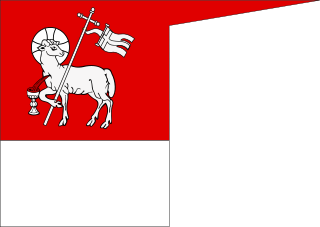
The Prince-Bishopric of Warmia was a semi-independent ecclesiastical state, ruled by the incumbent ordinary of the Warmia see and comprising one third of the then diocesan area. The Warmia see was a Prussian diocese under the jurisdiction of the Archbishopric of Riga that was a protectorate of the Monastic state of the Teutonic Knights (1243–1464) and a protectorate and part of the Kingdom of Poland—later part of the Polish–Lithuanian Commonwealth (1464–1772), confirmed by the Peace of Thorn in 1466. The other two thirds of the diocese were under the secular rule of the Teutonic Knights until 1525 and Ducal Prussia thereafter, both entities also being a protectorate and part of Poland from 1466.
![]() Media related to 1773 in Poland at Wikimedia Commons
Media related to 1773 in Poland at Wikimedia Commons